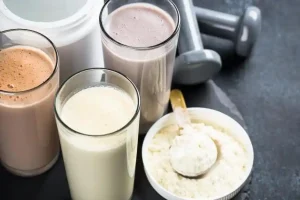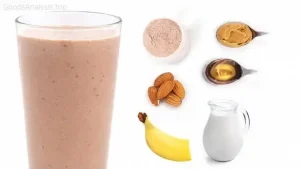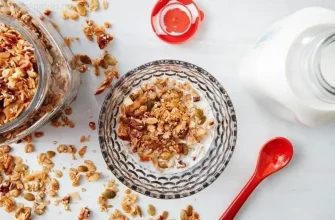Protein shakes have become a staple in many people’s diets, whether you’re an athlete, a fitness enthusiast, or just someone looking to improve your overall health. But while the concept is simple, the world of protein shakes can be surprisingly complex once you dig deeper. So, let’s dive into the science, the practicalities, and some tips that can help you make the perfect shake — whether you’re a newbie or have been blending away for years.
1. What is a Protein Shake?
A protein shake is essentially a beverage made by mixing a protein source (usually powder) with liquid. It’s designed to be a quick and convenient way to supplement your protein intake. Protein, as you probably already know, is an essential macronutrient that plays a critical role in building and repairing tissues, making enzymes, and supporting immune function. It’s especially important for those who engage in physical activities that stress the muscles, as protein helps them recover and grow.
2. Types of Protein Powders
There’s a wide array of protein powders available today, each with its unique properties. Let’s take a quick look at the main types:
- Whey Protein: This is the most popular protein powder and is derived from milk. It’s easily digested, absorbed quickly by the body, and contains all the essential amino acids. Great for muscle recovery after intense exercise.
- Casein Protein: Another milk-based protein, but this one digests slowly, providing a steady release of amino acids over several hours. It’s ideal for nighttime consumption.
- Plant-Based Proteins: These come from sources like peas, brown rice, hemp, and soy. They’re a great option for vegans or those with lactose intolerance.
- Egg White Protein: As the name suggests, this protein comes from the whites of eggs and is high in quality with a complete amino acid profile.
- Collagen Protein: While not a complete protein (lacking some essential amino acids), it’s great for skin, joints, and bones.
Each type has its pros and cons, so your choice should be based on dietary preferences, goals, and any allergies or intolerances you may have. For example, if you’re lactose intolerant, you might prefer a plant-based or egg white protein powder.

3. What You’ll Need for the Perfect Protein Shake
Making a protein shake is almost as simple as it sounds. Here’s what you need:
- Protein Powder: As discussed, this will be your primary ingredient.
- Liquid: The most common choices are water, milk, almond milk, or other plant-based milks. Water is the easiest option, but milk or plant-based milk can add creaminess and extra nutrients.
- Add-ins (Optional): Depending on your preferences and goals, you can add a variety of extras:
- Fruits: Bananas, berries, or mangoes are common choices for a flavor boost.
- Nut butters: Peanut butter or almond butter can add healthy fats and improve taste.
- Leafy Greens: Spinach or kale can sneak in some extra micronutrients without altering the taste much.
- Seeds: Chia, flax, or hemp seeds for fiber and omega-3s.
- Sweeteners: Honey, stevia, or agave if you prefer a sweeter shake.
- Yogurt: Greek yogurt adds creaminess and an extra protein punch.
4. The Basic Recipe for a Protein Shake

Here’s a foolproof recipe that you can customize according to your preferences:
- Choose your protein powder: 1 scoop (typically around 20-30g of protein).
- Pick your liquid: 8-12 ounces (250-350 ml) of water, milk, or plant-based milk.
- Add extra ingredients: Optional fruit, nut butters, or greens.
- Blend: Throw everything into a blender and mix for about 30 seconds until smooth.
Pro Tip: Start with water or unsweetened almond milk to keep things low-calorie. If you’re new to protein shakes, ease into it. Some people experience digestive discomfort when they first add a lot of protein to their diet.
5. Timing: When Should You Drink Your Protein Shake?
The timing of your protein shake depends on your fitness goals and lifestyle:
- Post-Workout: This is the most common time to consume protein. After exercise, your muscles need protein to repair and rebuild. Drinking a protein shake within 30 minutes to 1 hour after your workout is ideal.
- Pre-Workout: Some prefer to consume protein before working out to fuel their muscles.
- Morning: If you’re not eating a solid breakfast or need a quick boost, a shake can be a great way to start the day.
- Before Bed: If you’re looking for a slow, steady release of protein overnight, try a casein protein shake before bedtime.
While the “post-workout window” is often emphasized, research shows that the timing isn’t as strict as once thought. The most important factor is ensuring you meet your daily protein intake.

6. How Much Protein Do You Need?
This is where things get tricky, and unfortunately, there’s no one-size-fits-all answer. The amount of protein you need depends on several factors, such as:
- Activity Level: If you’re sedentary, the general recommendation is 0.8 grams of protein per kilogram of body weight. If you’re active or trying to build muscle, you might need anywhere from 1.2 to 2.2 grams per kilogram.
- Age: Older adults may need more protein to help preserve muscle mass.
- Health Goals: If you’re looking to lose weight, increase muscle mass, or improve recovery, you may want to increase your intake.
7. Potential Pitfalls: What to Watch Out For
While protein shakes are generally beneficial, they’re not a miracle solution. Some common issues to be aware of:
- Overconsumption of Protein: Too much protein can strain your kidneys over time, especially if you have pre-existing kidney conditions. Stick to your daily protein goals and don’t go overboard.
- Sugar Content: Many protein powders and pre-made shakes have added sugars. Always read labels carefully if you’re trying to keep sugar intake low.
- Digestive Issues: Some people experience bloating, gas, or digestive discomfort from certain types of protein (e.g., whey, lactose). If this happens, try switching to a different type or use digestive enzymes to help.
- Not a Replacement for Real Food: Protein shakes are a supplement, not a replacement for balanced, whole food meals. Don’t rely solely on shakes for your nutrition.

If you’re ever unsure or experience discomfort, it’s always a good idea to consult with a nutritionist or doctor.
8. Opinions on Protein Shakes
To give you a broader view, here are some real-world opinions from a diverse set of individuals:
- Sarah (USA, 32, Female): “I started using protein shakes after I began running marathons. It’s been a game-changer for my recovery. The only thing I’d suggest is to watch out for ones that are loaded with artificial sweeteners — they give me headaches.”
- Carlos (Mexico, 45, Male): “I’ve been lifting for years and always added protein shakes into my routine. My advice? Don’t just drink it after workouts. I have one in the morning to kickstart my day and another post-workout. It keeps my energy up and helps with muscle recovery.”
- Amira (Egypt, 50, Female): “I’m into yoga and Pilates, and protein shakes have become a regular part of my diet. I go for plant-based proteins like pea or hemp. I love how easy it is to make one and still get the nutrients I need.”
- Liam (UK, 62, Male): “I had a hard time digesting whey, so I switched to collagen protein. It’s good for my joints too, and I haven’t looked back. I don’t drink it every day, but when I need a boost, it’s perfect.”
- Jing (China, 38, Female): “I have a busy lifestyle, so protein shakes are a lifesaver for me. I keep a shaker bottle in my bag just in case I need a quick snack. I prefer vanilla flavor — I can mix it with anything, even a bit of green tea powder for an extra kick!”
Final Thoughts
Protein shakes can be a great addition to your diet, offering convenience and support for muscle recovery and overall health. Whether you’re looking to build muscle, lose weight, or just maintain your current fitness level, a well-balanced protein shake can help. Just remember to choose the right protein, avoid overdoing it, and use shakes as a supplement, not a replacement for a whole food diet. Cheers to better health, one shake at a time!









